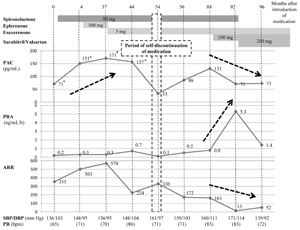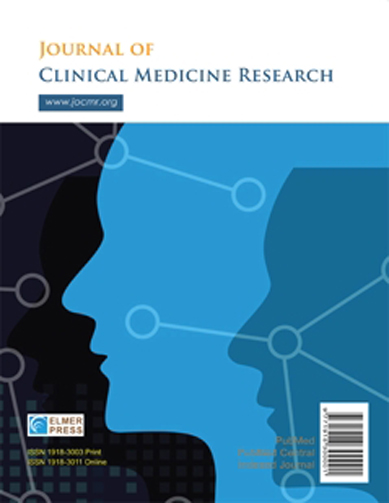Addition of Sacubitril/Valsartan to Mineralocorticoid Receptor Antagonist Therapy in Primary Aldosteronism: Effects on Plasma Aldosterone Concentration and Plasma Renin Activity
DOI:
https://doi.org/10.14740/jocmr6058Keywords:
Primary aldosteronism, Sacubitril/valsartan, Renin, Aldosterone, Mineralocorticoid receptor antagonists, HypertensionAbstract
In the pharmacologic treatment of primary aldosteronism (PA), titration of mineralocorticoid receptor antagonist (MRA) dosing is necessary to reverse the renin suppression caused by high aldosterone levels. However, we often encounter cases in which the plasma renin activity (PRA) does not achieve the target level, even with the maximum dose of MRA. In this setting, sacubitril/valsartan, a combination of a neprilysin inhibitor and an angiotensin II type 1 receptor blocker that is approved for use as adjunctive therapy with an MRA, has been reported to inhibit aldosterone secretion both in vitro and in vivo. If sacubitril/valsartan proves to be effective in this context, it may offer a promising treatment for PA. However, there are few reports on the use of sacubitril/valsartan in this disease. We used add-on sacubitril/valsartan in three patients with PA, in whom blood pressure was insufficiently reduced and PRA remained suppressed despite administering the maximum dose of MRA. With the addition of sacubitril/valsartan, the decrease in plasma aldosterone concentration (PAC) was more marked than the increase in PRA. Because MRAs do not suppress aldosterone production but instead act by blocking mineralocorticoid receptors, use of these agents actually promotes the renin-angiotensin system and leads to increased PAC resulting from positive feedback. The pathological significance of the phenomenon whereby PAC increases with MRA administration but decreases with the addition of sacubitril/valsartan is unclear. In PA, more effective treatment may be possible by suppressing aldosterone with sacubitril/valsartan and blocking the action of aldosterone with MRAs.

Published
Issue
Section
License
Copyright (c) 2024 The authors

This work is licensed under a Creative Commons Attribution-NonCommercial 4.0 International License.









